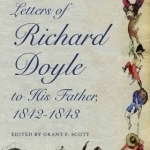The Illustrated Letters of Richard Doyle to His Father, 1842-1843
BookThis item doesn’t have any media yet
2016 | Architecture & Design
"Scott's collection of illustrated letters from the hand of Richard Doyle, the fascinating but neglected contributor to Punch magazine, are a goldmine. Accompanied by an excellent editorial apparatus, the letters provide a revealing glimpse into the lives of a Victorian family steeped in the arts in the early 1840s." -Bernard Lightman, York UniversityBefore he joined the staff of Punch and designed its iconic front cover, illustrator Richard "Dicky" Doyle was a young man whose father (political caricaturist John Doyle) charged him with sending a weekly letter, even though they lived under the same roof. This volume collects the fifty-three illustrated missives in their entirety for the first time and provides an uncommon peek into the intimate but expansive observations of a precocious social commentator and artist. In a series of vivid manuscript canvases, Doyle observes Victorian customs and society. He visits operas, plays, and parades. He watches the queen visiting the House of Commons and witnesses the state funeral of the Duke of Sussex. He is caught up in the Chartist riots of August 1842 and is robbed during one of the melees.
And he provides countless illustrations of ordinary people strolling in the streets and swarming the parks and picture galleries of the metropolis. The sketches offer a fresh perspective on major social and cultural events of London during the early 1840s by a keen observer not yet twenty years old. Doyle's epistles anticipate the modern comic strip and the graphic novel, especially in their experimentation with sequential narrative and their ingenious use of space. The letters are accompanied by a full biographical and critical introduction with new material about Doyle's life.
Related Items:
| Published by | Ohio University Press |
| Edition | Unknown |
| ISBN | 9780821421857 |
| Language | N/A |
Images And Data Courtesy Of: Ohio University Press.
This content (including text, images, videos and other media) is published and used in accordance
with Fair Use.
